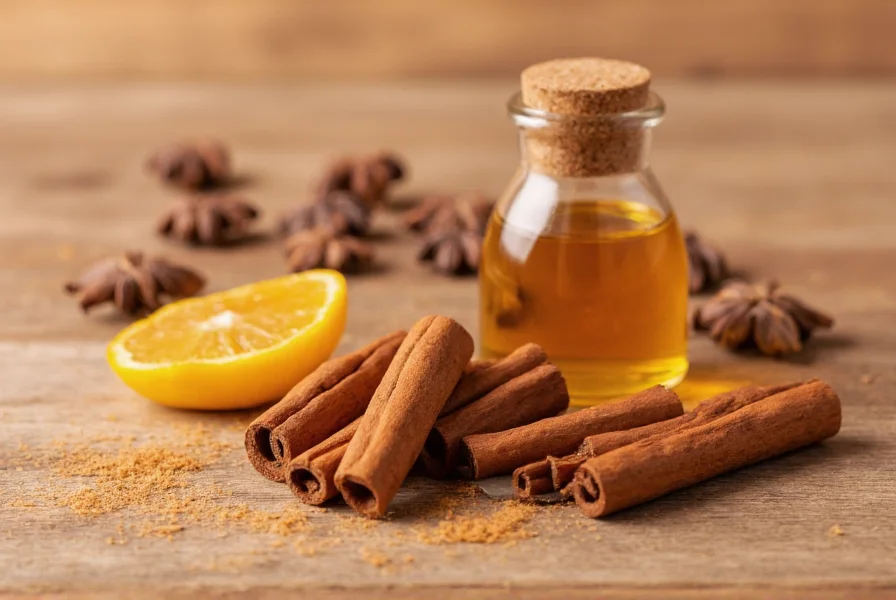Cinnamon cassia oil serves as a potent essential oil extracted primarily from the bark of Cinnamomum cassia trees native to China and Vietnam. Unlike true cinnamon (Cinnamomum verum), cassia varieties contain significantly higher concentrations of cinnamaldehyde (60-90%) and coumarin, which influences both its therapeutic applications and safety considerations. This distinction between cinnamon cassia oil and other cinnamon varieties proves critical for safe usage in aromatherapy and topical applications.
Understanding Cinnamon Cassia Oil Composition
The chemical profile of cinnamon cassia oil differs substantially from Ceylon cinnamon oil, creating important implications for users. While both originate from related tree species, cassia oil contains approximately 80 times more coumarin than its Ceylon counterpart. This compound, while contributing to the characteristic scent, raises safety concerns when used improperly. The high cinnamaldehyde concentration (typically 60-90%) gives cassia oil its distinctive spicy aroma and accounts for many of its biological activities, including antimicrobial effects observed in laboratory studies.
Comparing Cinnamon Oil Varieties
| Oil Type | Cinnamaldehyde % | Coumarin Content | Primary Source | Skin Safety |
|---|---|---|---|---|
| Cinnamon Cassia Oil | 60-90% | High (2,500-6,000 ppm) | Cinnamomum cassia bark | Requires 1% dilution |
| Cinnamon Bark Oil | 70-85% | Moderate | Cinnamomum zeylanicum bark | Requires 0.5% dilution |
| Cinnamon Leaf Oil | 65-80% | Very Low | Cinnamomum verum leaves | Requires 2% dilution |
Evidence-Based Applications of Cinnamon Cassia Oil
Research indicates several potential applications for cinnamon cassia oil, though scientific evidence varies in strength. Laboratory studies demonstrate notable antimicrobial activity against certain bacteria and fungi, suggesting possible applications in surface disinfection. A 2022 review in the Journal of Essential Oil Research noted cassia oil's effectiveness against foodborne pathogens when properly diluted. However, human clinical trials remain limited, and current cinnamon cassia oil benefits should not be overstated. Traditional uses in aromatherapy for respiratory support lack robust clinical validation, though the oil's warming properties may provide temporary comfort during cold seasons.
Safety Considerations and Proper Usage
Understanding how to use cinnamon cassia oil safely represents the most critical aspect of working with this potent essential oil. The high coumarin content necessitates careful consideration for internal use, with most aromatherapy organizations recommending against oral consumption. For topical applications, a maximum dilution ratio of 1% (6 drops per ounce of carrier oil) prevents skin irritation, particularly important given cassia oil's status as one of the most common essential oil allergens. Individuals with sensitive skin should conduct patch tests 24 hours before broader application. Those taking blood thinners should consult healthcare providers due to potential interactions with coumarin compounds.
Selecting Quality Cinnamon Cassia Oil Products
When evaluating cinnamon cassia oil products, look for GC/MS (gas chromatography/mass spectrometry) reports verifying composition. Reputable suppliers provide these third-party analyses showing exact cinnamaldehyde and coumarin percentages. The oil should appear golden to reddish-brown; pale yellow hues may indicate adulteration. Check for proper Latin naming (Cinnamomum cassia) on labels, as "cinnamon oil" alone doesn't specify the variety. Consider whether the product comes from sustainable harvesting practices, as overharvesting threatens wild cinnamon populations in some regions.
Common Misconceptions About Cinnamon Cassia Oil
Several widespread misconceptions about cinnamon cassia oil require clarification. Many believe all cinnamon oils are interchangeable, but the significant chemical differences between cassia and Ceylon varieties affect both safety and efficacy. Another common error involves assuming natural equals safe, ignoring that cassia oil's potency demands careful handling. Some marketing claims suggest cinnamon cassia oil benefits for blood sugar management, but current evidence remains preliminary and shouldn't replace medical treatment. Understanding these distinctions helps users make informed decisions about incorporating this oil into wellness routines.
Practical Integration into Daily Wellness
For safe integration of cinnamon cassia oil into daily routines, consider these evidence-based approaches. In aromatherapy diffusers, use 1-2 drops maximum per 100ml of water for short durations (30-60 minutes) to avoid overwhelming the senses. For surface cleaning solutions, combine 5-10 drops with 1 cup of water and ¼ cup white vinegar in a spray bottle. Never apply undiluted to skin, and keep away from mucous membranes and eyes. During colder months, adding properly diluted cassia oil to chest rubs may provide temporary respiratory comfort, though scientific evidence for this specific application remains limited.
Conclusion
Cinnamon cassia oil offers distinctive properties that differentiate it from other cinnamon varieties, requiring specific handling considerations due to its chemical composition. While laboratory research shows promising antimicrobial effects, users should maintain realistic expectations about its applications and prioritize safety through proper dilution and usage practices. Understanding the differences between cinnamon cassia oil vs cinnamon bark oil helps prevent misuse, while attention to quality indicators ensures effective and safe integration into wellness routines. As with any potent botanical product, informed usage based on scientific understanding rather than marketing claims delivers the most beneficial experience.











 浙公网安备
33010002000092号
浙公网安备
33010002000092号 浙B2-20120091-4
浙B2-20120091-4